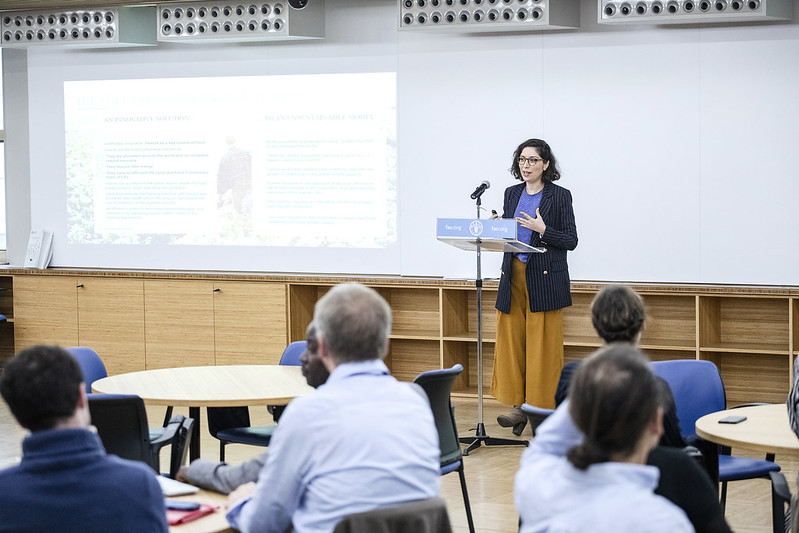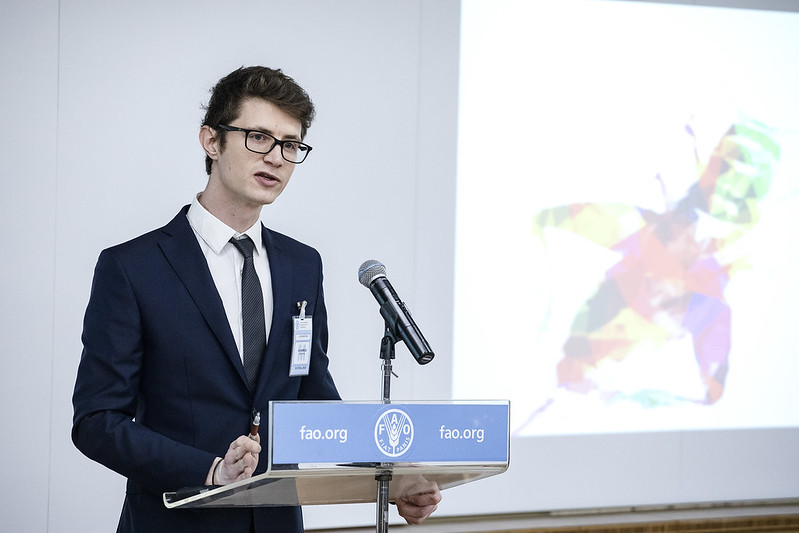Exploring the world of alternative proteins

Edible crickets. Meat grown in a lab. Animal feed components made from insects.
In December, FAO’s annual Investment Days looked at some of the innovations from the world of alternative proteins for human and animal consumption.
Participants debated how these protein sources could impact the transformation of the global food system into one that is healthy for people and the planet.
Untapped resource
Insects are an abundant and largely untapped resource the world over.
Syrine Chaalala, co-founder of nextProtein, explained that the company’s insect of choice, the Black Soldier Fly, can turn low value organic substrate into high value protein-rich feed ingredients.
It also requires little space thanks to vertical farming, has one of the most efficient feed conversion ratios and has close to no carbon footprint.
One of the company’s main products is an insect-based protein powder that serves as a cost-effective alternative to fishmeal for the aquaculture market.
“We contribute to the circular economy by feeding insects with plant-based food waste that would otherwise end up in landfills,” she said. “We’re really just creating a sustainable industry out of nature all while respecting nature.”
She was quick to note that the company’s products were not novelties or a fad but rather an already competitive contender in the commodities market.
“We can produce as much protein in 100 m2 of insects as 100 hectares of soya bean,” she said.

Rethinking meat
Mosa Meat, a Dutch company, is rethinking the way we make meat.
The company, comprising mostly scientists and engineers, is pioneering the production of cultured meat made from animal stem cells grown in a laboratory.
Sarah Lucas, Head of Operations, explained how Mosa Meat takes a small sample of tissue from a cow. They isolate the stem cells, which can then replicate and turn into muscle and fat tissue.
Mosa Meat produced the world’s first hamburger made from cultured meat in 2013.
They have since improved the hamburger’s taste, and are planning to scale up and have a market-ready product by 2022.
It is projected that cultured meat will require less land and water, and generate fewer greenhouse gas emissions, than traditionally produced meat. It also has implications for human health as well as animal welfare, as no animals are slaughtered.
It is a “sustainable, healthy and animal-friendly source of protein,” Lucas said.

Cricket potential
According to Aldo Borello, co-Founder of the Italian company DL Novel Food, revolutionary ideas come in three phases.
“First there is mockery and ridicule, followed by fear of change and the shaking up of our traditional ways and then finally the evidence before our eyes,” he said.
Recognizing the growing demand for protein worldwide, the company saw enormous potential in breeding crickets for human consumption.
To show that potential – and get beyond any possible ‘ick factor’ – Investment Days participants were treated to a sampling of sweet and salty cricket-based foods and cricket beer.
The company is promoting its technology to attract more breeders, and soon will expand its offering by launching a line of dog food products called Novel Pet Food.

Feeding the future
We know the challenges before us.
As a global community, we have to sustainably produce more food with less to feed a growing population. And we have to make sure that food is healthy, affordable and safe. Doing so calls for a bold vision and innovation.
The innovations shared during Investment Days are among the many developments in the world of alternative proteins – a world that holds promise and warrants further analysis, from food safety and hygiene issues to production costs, life cycle assessments and equity.
According to Chaalala, we need to “take calculated risks and invest in – and not fear – innovation so we can all feed the future together.”
